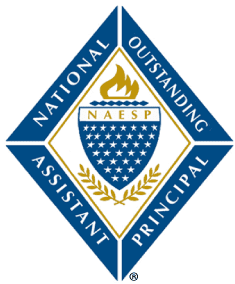
Ashley L. Farrington
Wayzata Central Middle School
Plymouth, Minnesota
ashley.farrington@wayzataschools.org
Best Practices
1) Collaborative work through PLCs and teams. This is especially important to schools running a “true middle school,” that builds in time for teachers to collaborate. When educators engage in collaborative work, it improves the learning and working environment for students and teachers. At our school, teachers have the opportunity to collaborate with teachers from the grade level contact PLC and grade level team (four core coaches). Each teacher has one professional obligation period each day to either meeting with their PLC or team to engage in data driven dialogue about students. Our PLCs are focused on the content and our teams are focused on the social, emotional, and behavioral needs of our students. In our format, teachers meet with their teams on Monday, Wednesday, and Fridays, and with their PLCs on Tuesdays and Thursdays. During this time, teachers are collaborating about students. Our PLCs use a format where each member has a role. We call them Specialists, of which there are four: Equity, Differentiation, Extension, and Data. The goals is to have each specialist hold the group accountable to having these conversations when they meet in their content PLCs. This has proven to be good for us because teachers are having the collaborative conversations in their content PLCs and supporting each other. The same is present in our grade level team meetings with the four core teachers. However, this conversation is led by our counselors who work with teachers to address student needs. Every time they meet, they review each student on the team and collaborate about student success and strategies to support students who may be struggling. Teacher are able to have collaborative conversations about student success in their individual classes and share ideas with each other. If a student comes up more than once, the counselor brings that student to our Problem Solving Team (administration and other counselors) and we devise interventions for the team to try or figure out appropriate next steps. These methods of collaboration at our school has proven to be very successful to helping our students and teachers. The idea of a team approach is better for everyone involved and allows us teachers to team up to best meet the needs of the learners in their classrooms. I am a firm believer in this best practice. The more that we collaborate with each other, the better for our students. Every teacher brings a different strength to the table and can use those strengths to help students reach maximum success.
2) In the world that we live in, we cannot only focus on student academic needs, we must also focus on the social emotional well-being of our students. This is important for students of all ages, especially middle school students. During the time that students are in middle school, they are undergoing many changes physically, socially, emotionally, and mentally. Schools are charged with the task of helping students navigate these changes and learn how to work to manage their emotional well-being. As a result, we have to find ways to first teach students to manage feelings and emotions, and to handle frustrations. We have to find ways to help students learn what is appropriate and not appropriate for certain places. We have to help students prepare for the real world.
At our school, we are using our advisory time to help with the social emotional learning for our students. Each day, students attend an advisory period for 26-minutes. This is a time where students connect and build strong relationships with teachers and students in the classroom. There is less focus on academics and more focus on social emotional learning. Our advisory time is protected for all students we had an advisory committee who worked to develop an advisory calendar for each grade level. Within this calendar are lessons for teachers to teach around common themes and practices. We are focused on character development and giving students strategies to manage life, along with other important life skills. Our teachers are building relationships with students and getting to know more about them beyond subject related things. Students are having conversations with each other through games, skits, and other fun activities. Finally, our advisories are combining with other advisories on their team to celebrate student success and reinforce our school character goals.
I believe it is very important to establish and implement social emotional learning into school programs. Our students need this more than ever. In our digital era with social media and other technology, we still need to teach how to interact positively with others in person. While it’s easy to want to spend resources to increase test scores, we cannot ignore the important trend of social emotional learning for all. This best practice will help develop the whole child and ultimately help create lifelong learners and positive contributors to our world.


